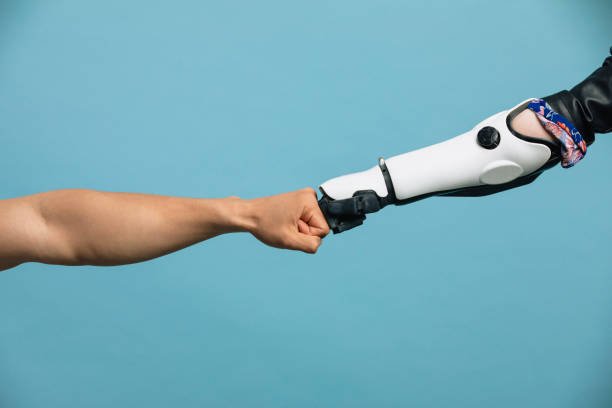Using AI for Good
Whether it's using prediction modeling for finding the best route on your way to work or having a, albeit possibly imprecise, conversation with Siri or Alexa to remind you to buy more toilet paper, we have almost daily contact with a myriad of technologies. Some applications might seem small or somewhat insignificant, but many of these technologies that we almost take for granted are being used in the real world to help people achieve fantastic things. Here are a few examples of how technologies we use every day at EnterpriseAI, are being used by others in completely different ways.
Voice recognition
It can be convenient to use Siri to aggregate your shopping list or change the music in your house, but for some people, voice recognition technology might be the one thing that can help them get their voice back. There are several reasons someone might develop speech problems such as a stroke, MS, seizures, or ALS, to name a few. As these conditions worsen, a person might struggle to be understood.
Tim Shaw, an American football player diagnosed with ALS a few years ago, paired up with Project Euphonia, Google's AI For Social Good initiative. Shaw had difficulty speaking because of his worsening ALS, so Project Euphonia set to work improving computers' abilities to decipher sounds and speech patterns of those with a-typical pronunciation.
Chatbots
If you remember from our interview with chatbot expert Mercedes Rodríguez, there are many ways that chatbots can help companies with their customer service or ordering. While most of the chatbots we work with at EnterpriseAI are for customer service or sales, the You Are Not Alone campaign from Wales uses the same chatbot technology to help victims of domestic violence. During the pandemic, the situation for many facing domestic violence got much worse. Not only were people facing more fear and frustration because of the general state of the world, but many people were drinking more than usual, and there was no way for someone who felt unsafe to leave the house. You Are Not Alone, along with many other similar programs worldwide, are using AI and chatbots to help survivors get help quickly and confidentially. The chatbots are programmed to offer advice and contact local authorities without causing suspicion in the violent partner.
Prediction modelling
We help our customers implement prediction modelling to help them up-sale or figure out how to best find and bring in new customers. The same types of technologies are being used by Amnesty International to predict and prevent human rights abuses around the globe. Amnesty International deals with thousands of human rights violations and every time something unexpected gets in their way or slows them down, it can have grave consequences.
In 2013, a team of twenty volunteers conducted a weekend DataDrive to organize, map, and query the dataset of 5,000 raw text files. Volunteers identified critical events that possibly caused situations to escalate to a crisis point. By picking out keywords or phrases, they can now determine faster and with better accuracy, which events are in danger of escalating out of hand.
Predictive maintenance
Predicting how long things will last or when they might break can save companies and consumers a ton of money, but it can also help us reduce our carbon footprint. Electronic companies have noticed that their customers are now looking for a quality product and something that they can feel good about at the end of the day. There are two main ways that predictive maintenance can help reduce our carbon footprint.
First, is when it comes to manufacturing. You should be familiar with this part as it's the same process as how predictive maintenance helps our customers. Instead of waiting until something breaks down and causes a problem, you can catch it early and prevent something completely breaking or needing to go to the dump. This adds to the durability of the product. A short-lived washing machine, for example, will generate 1.1 more tonnes of CO2 over twenty years than a longer-lasting model. AI and predictive maintenance are helping manufacturing companies bring us out of the buy and replace mentality of the 1950s and into a mindset where consumers are willing to pay more for goods that will last. We generate 50 million tonnes of e-waste every year, and a considerable part of that is large household appliances.
The last part is making our home appliances more energy efficient. Many companies use predictive maintenance solutions to monitor and analyze energy consumption in real-time to diagnose where underlying energy consumption issues might be. Because of this, every year our electronics and home appliances require less electricity.
While the state of our technologies and what we should be doing with them is not always exact, it's hard to argue that these technologies haven't offered real and substantial benefits to people's lives. We might hit bumps along the way, or make a mistake here or there, but overall the potential of doing good with these technologies outweighs the negative right now. Hopefully, we can continue down the same path and help people lead richer and healthier lives while making our planet a better place to live.




